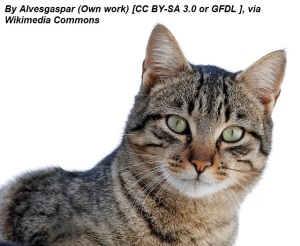Relax. Get comfortable. This is a story of real science. It is not click bait. It will require some thought. It will appeal to your left brain. It has nothing to do with cats.
This post is about a paper published in the peer-reviewed journal PLOS One titled Rescue of Fructose-Induced Metabolic Syndrome by Antibiotics or Faecal Transplantation in a Rat Model of Obesity. (Thanks to Dani for pointing this paper.)
Note this is not as authoritative as Science or Nature, but it is a couple of steps above Buzzfeed or Dr Oz.
Regardless, we are are going to review it and see how it is a example of good science.
The paper opens with the assertion that fructose (aka Western Diet) is unhealthy: “A fructose-rich diet can induce metabolic syndrome, a combination of health disorders that increases the risk of diabetes and cardiovascular diseases.”
For the purposes of a scientific paper, this bold statement is understood to be merely an hypothesis.
Previous research has hinted at this conclusion with data like “It has been estimated that in the US the load of free fructose has increased from 158.5 kcal per person per day in 1978 to 228 kcal per person per day in 1998,” paired with “This substantial increase has paralleled the increased incidence of obesity.” However, this is merely correlation and scientifically useless for anything other than suggesting a hypothesis.
As good scientists, the authors acknowledge “the contribution of high-fructose diets to the development of obesity remains controversial, since some authors have not observed unequivocal evidence linking fructose consumption with metabolic disorder.” Note that the fructose conclusion is controversial because the evidence does not support it. Nothing is said about media personalities and opinion polls.
These scientists want to design an experiment to test the hypothesis to generate more evidence. This new evidence might support or reject the hypothesis. This is the Scientific Method and how science works, just like your were taught in school.
The first challenge these scientists must face is experimental design. As the hypothesis concerns people, it would be best to run the experiment on people. This won’t happen for two reasons. First, it is unethical to use people as test subjects. Among other criteria, the benefits must outweigh the cost, and the subjects must be protected from harm.
The experiment in question involves feeding subjects a diet expected to make them sick. This is not allowed.
[Aside: This restriction is why you see so many data analysis reports that try to figure out causes after the fact, by comparing people who happened to do one thing (eschew fructose) with people who happened to do another (consume lots of fructose). These reports come with many confounding factors, and are better for click-bait headlines than good science.]
The second reason people are not the test subjects is that they live too long. If we imagine that one needs to consume a high-fructose diet for 5% of their lifetime to see an effect, this is too long for people (around 4 years), but just right for rats (around 8 weeks). As lab rats are so important to medical research, the correspondence of rat age to human age is well studied and understood.
So the answer is to use short-lived rats. Much is known about rats, and particularly how to generalize from rats to people. Regardless, rats are also protected, and the experiment design is reviewed to protect the rats. (Rats are not protected as well as people, but they are protected.)
“Treatment, housing, and euthanasia of animals met the guidelines set by the Italian Health Ministry. All experimental procedures involving animals were approved by “Comitato Etico-Scientifico per la Sperimentazione Animale” of the University “Federico II” of Naples.”
The experiment divided the rats into two groups. The control group was fed a control diet and the experimental group was fed a fructose-rich diet. Aside from that single experimental variable, the scientists did their best to keep everything else the same. This is why these controlled experiments are so much better that those after-the-fact data studies mentioned above.
“The energy content of the two diets was the same, because the composition was the same, except that half of the starch of the control diet had been substituted with fructose in the fructose-rich diet (Table 1). In addition, rats were pair-fed for the whole experimental period, by giving them the same amount of diet, both as weight and as caloric content. Each rat consumed the full portion of the diet fed them each day over the 8 week study period.”
Many tests were performed to evaluate the rats at the end of the experimental period. To spite the equivalence of caloric intake, the rats that consumed the fructose-rich diet had significantly more body fat.
At this point, their controlled experiment shows that the fructose-rich diet leads to increased body fat.
This is the common plaint of many dieters. Calorie and body fat do not correlate.
At this point we have a nice experiment. We could possibly win a science fair with this, but these scientists took the next step.
They had shown that the fructose-rich diet causes a condition. They also believed that they knew the mechanism. Knowing the mechanism is even better than knowing a cause. Medical science moves forward when the mechanism is known.
This is why the discovery of vitamin C was more important than realizing that limes were a prophylactic for scurvy. Both discoveries were important, but the mechanism (vitamin C deficiency) led to new and improved treatments.
In the case of HIV/AIDS, no progress was made until the HIV virus was identified. Knowing the behaviors which transmitted HIV/AIDS was helpful, but the viral mechanism led to effective treatment.
Now that the experiment had shown the existence of “fructose-induced metabolic syndrome,” the scientists hypothesized that the cause was a imbalance of micro-flora in the gut caused by the fructose-rich diet.
They further hypothesized that balance could be returned either with a targeted administration of antibiotics, or “faecal samples from control rats by oral gavage” to return balance. The fecal sample approach hypothesized that the control rats still had a healthy mix of gut micro-flora and introducing that healthy mix into the experimental rats would return them to a healthy balance and reverse the negative effects of their fructose-rich diet.
Happily (for the rats) both of these treatments improved the experimental rats’ condition.
Now that the scientists had experimentally shown they could cause fructose-induced metabolic syndrome and reverse it under controlled experimental conditions, we can all be confident that we are one step closer to understanding one cause and treatment for obesity and associated conditions.
There, that wasn’t so hard was it?
Post Script: I understand that no matter how difficult you might feel it is to reduce your consumption of high-fructose corn syrup (a major component of most non-diet soda pop), I imagine the yuch factor with fecal transplants is more off putting. However, as more is learned about gut flora, this may become a major new direction for medicine in the 21st century. Now might be a good time to start thinking positive thoughts about fecal transplantation.






